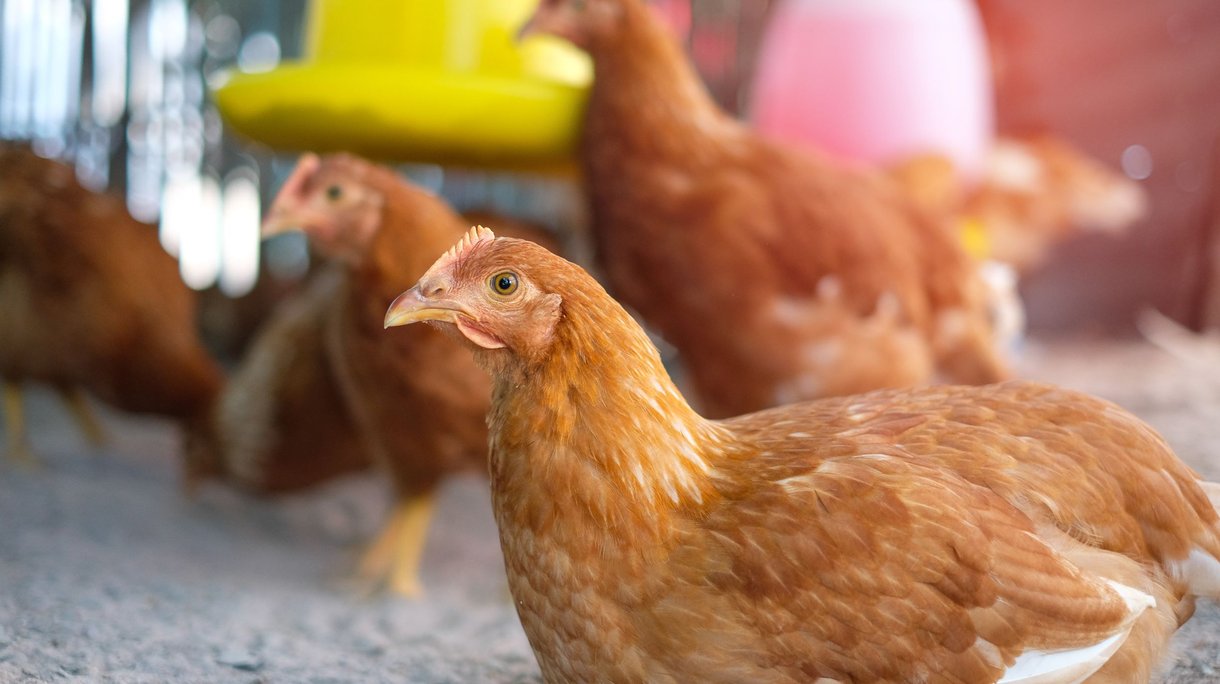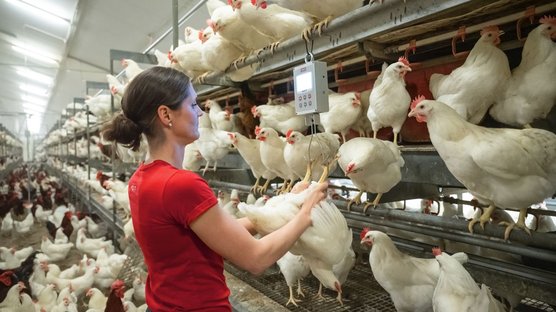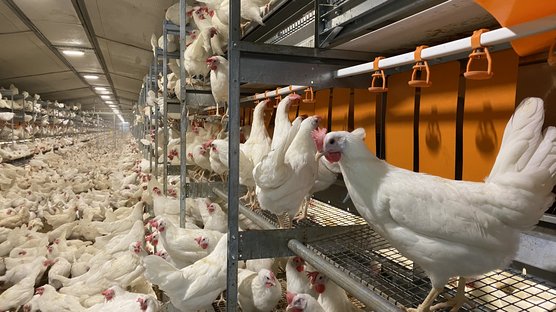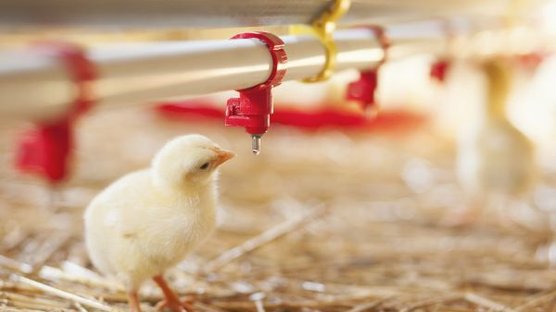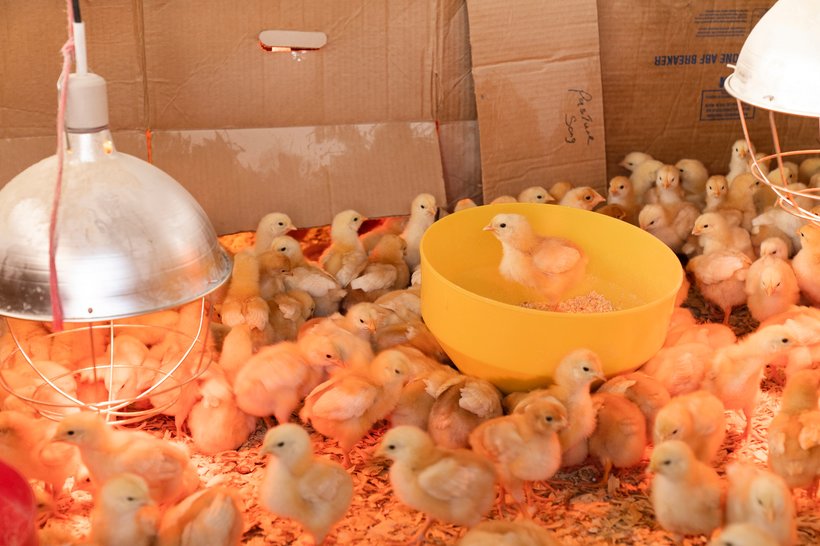
Published on Nov. 16, 2020
Tips and Tricks for Rearing Poultry in Hot and Tropical Climates
Rearing chicken pullets according to their standard and achieving good egg production results with your flock can be quite a challenge under hot or tropical conditions. The optimum environmental house temperature for laying hens is about 25° Celsius. Especially when the chickens are already acclimatized to warmer temperatures, they can still regulate their own body temperatures well up to 30°C. Above an indoor temperature of 30°C you should take actions to provide a more comfortable climate to the pullet chickens. Investments do not always need to be expensive, and with management interventions you are able to achieve excellent performance with your flock of laying hens.
adjusting the Climate via Cooling and Ventilation.
Cooling of the house can be achieved with a pad cooler, which can lower the temperature of the house significantly. But in order to prevent draught, make sure that the cooled air is not directly pointed in the direction of the birds. Another option to cool the house is spraying the roof with water, this is recommended when direct sunlight falls on the roof of the poultry house. Due to the high temperature of the roof, the water that is sprayed upon the roof will be evaporated. This evaporated water will cool down the incoming air around the poultry house. Also, inside the house you can take your measurements to cool things down, installing foggers (spraying tiny water drops) will also result in evaporative cooling of the air. Please note, only apply these methods with cooling via water in area’s where the relative humidity is not too high!
Ventilation (the exchange and movement of air) can be used to help the chickens to get rid of some of their excessive heat. Opposite of mammals, chickens are not able to sweat. They try to cool themselves by panting, e.g. the evaporation of moisture. As a result of this panting, the environmental humidity will go up. In order to facilitate the birds with panting even more, it is important to get rid of the humid air, this can be easily achieved with ventilation.
Stocking densities
In case you often have had difficulties with growing your pullets, or achieving good results with your birds, you should have a look at your stocking densities. Too high stocking densities will result in more heat production, and therefore more heat stress. It is advised to give pullets and laying hens housed in naturally ventilated barns in hot and tropical climates, more space, e.g. reduce your stocking density.
Steering with the Lighting program
Next to the previous, you can also steer the performance of your birds with the lighting program. In hot countries, heat can significantly reduce the birds’ appetite. Therefore, we advise using a longer step-down program in rearing which will help to:
- Increase the feed intake and consequently the birds’ growth
- Overcome the negative effects of the heat, allowing the birds to eat during the cooler hours of the day, by giving light in the early morning.
Next to a longer step-down program, you could apply Mid-night lighting: providing 1.5hr to 2hr in the middle of the dark period with the feeders running. Mid-night lighting is often used to encourage feed intake and growth at the beginning of production, but also allowing the birds to eat during the cooler hours of the night. If necessary, it can be introduced after transfer and then be gradually withdrawn when the chickens have reached their adult body weight. It can be used during the rearing phase to promote growth, but caution should be taken when introduced between 10 to 16 weeks of age, as it could interfere with sexual maturity. In addition to this, mid-night lighting helps to maintain a better eggshell quality by allowing the laying hens to ingest calcium at the end of shell formation. This has a beneficial impact on shell quality and hence on hatchability. The regular lighting program (time of “lights-on” and “lights-off”) should not be changed when the mid-night light is added. Mid-night lighting may be used throughout the flock’s life if necessary, but it can be also removed if not needed (e.g. body weight targets that have been achieved, or the hot period is over). When mid-night light is withdrawn, the reduction should be gradual, in short steps, at a maximum rate of 30 minutes per week, to avoid a negative impact on daily feed intake.
Feed strategies to overcome negative effects of heat stress
When poultry face heat stress, their body will release stress hormones in order to keep the stress under control. Essential in the production of stress hormones is vitamin C. The trouble is, when birds are experiencing heat stress, they produce less vitamin C, resulting in fewer stress hormones to be released. You could add vitamin C to the drinking water to boost the production of stress hormones. Adding bicarbonate (HCO₃) also helps to reduce the negative effects of heat stress as it will lower back again the alkaline level of the blood (the blood becomes more alkaline as a result of CO₂ expiration due to increased respiration). Bicarbonate is normally needed for the calcification of the eggshell, supplementing it will help to maintain the eggshell quality as it will overcome the shortage as a result of heat stress.
The easiest and cheapest way to overcome heat stress: drinking water management
One of the easiest and cheapest steps to maintain the hen’s appetite, and therefore their development or their egg production, is to supply them with fresh and cool drinking water. This will help the birds to reduce their body temperature and it will increase their feed intake. Golden rule: make sure that the drinking water temperature never exceeds the body temperature of the birds. Regularly flush the drinkers, try to insulate your water tanks and water lines and prevent at any time that direct sunlight falls on your water tanks, as this will warm up the drinking water. Installing a simple roof over your water tank or paint the tanks white, so they will absorb less heat, are examples of simple, but effective measures.
